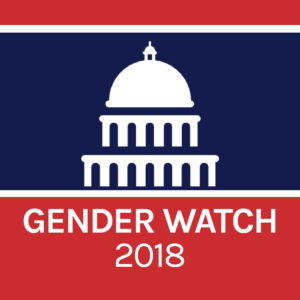In several important ways, yes there was a pink wave in Pennsylvania this week, but that won’t mean the gender dynamics of Pennsylvania politics will change overnight.
On Tuesday night, all eyes were on the state as a record number of women candidates sought a spot on the general election ballot. Much attention has been paid to the 20 (19D, 1R) women who contested the state’s 18 U.S. Congressional Districts. Women’s candidacies were particularly notable because there are currently no women in Pennsylvania’s congressional delegation and, since its founding, Pennsylvania has sent just seven women to Congress. This year’s primary candidates fared reasonably well, especially given that many of them were running against one another.
There will be at least eight women on the general election ballot. The race in the 5th Congressional district will feature both a Republican and Democratic woman – a first in the state’s history – all but guaranteeing the delegation will have at least one woman in 2019. Several women are favored in their races – notably Democrats Chrissy Houlahan, Madeleine Dean, Mary Gay Scanlon, and Susan Wild. A pink wave, maybe, but even with these gains men will outnumber women in the delegation by at least 2 to 1 and Republican women and women of color will still be unrepresented among Pennsylvania’s members of Congress.
The same fate is certainly true of the state legislature, ranked one of the worst in the country for women’s representation. Pennsylvania’s state legislature has also been the focus of criticism by the few women who currently hold office. One representative recently called the general assembly the most misogynistic place she has ever worked. The general assembly will most certainly have more women after November, as 83 percent of the women candidates who sought either state house or state senate offices were successful in their primary races. A whopping 118 women are state legislative nominees this year, and almost three-quarters of them are Democrats. A pink wave, maybe, but 248 of the candidates – or 68% – are still men.
Beneath the numbers, there are some reasons to think the wave of newcomers to Pennsylvania politics may be pink tinged.
The candidates are stronger.
One long-standing concern is that women are often run as sacrificial lambs; that is, they are recruited to run for seats they are unlikely to win and receive only superficial support for those races. That has certainly been true in Pennsylvania, where incumbency means challengers face an uphill climb and both congressional and state legislative seats have been historically uncompetitive. In 2018, many of the women who ran were exceptionally well-qualified and, importantly, were not recruited; rather, they injected themselves into a political scene they realized needed fresh perspectives. In doing so they enhanced the competitiveness of races. It is hard to say precisely why this is, but these women were not passive observers to increased competitiveness. They knew how to navigate it.
The candidates were trained.
Executing a winning campaign is rarely a fluke, and many of this year’s candidates sought guidance on how to do it effectively through campaign trainings and mentoring programs. According to Emerge America in Pennsylvania, a Democratic organization that started training women for political leadership, 20 of their alumnae ran for various offices in this year’s primaries. Seventeen of them were successful. Here at the Pennsylvania Center for Women and Politics, participation in our one-day nonpartisan Ready to Run campaign trainings have been up 50 percent or more since 2016. The 2018 primaries featured 20 of our program alumnae, both Republicans and Democrats, 14 of whom were successful in their races. Trainings boost confidence and offer crucial insights into the campaign process. Research on the effects of campaign trainings finds that states with campaign training programs have more women in elective office.
The campaigns are better.
Whether the candidates attended a training or not, many of them cultivated impressive grassroots organizations. In Southwest Pennsylvania, where there are only a handful of women serving in the general assembly, two candidates – Summer Lee and Sara Innamarto – challenged the Democratic party establishment (identifying as Democratic Socialists) and beat long-time incumbents from a prominent political family. Neither woman faces general election opposition in heavily Democratic Pittsburgh, making it all but certain that Lee will be the first woman of color to ever serve the region.
People are woke?
It might not just be that women candidates are better and working harder. The electorate may be waking up to concerns about women’s representation, too. Most people do not realize just how dramatically underrepresented women are in general or specifically in Pennsylvania. One report put the state at 49th in the nation for women’s representation and many other indicators of women’s well-being are near the bottom in the nation. In the wake of Hillary Clinton’s loss in the state, which also saw a promising candidate to be the state’s first woman U.S. Senator defeated, there has been increased media attention to the obstacles women face as political candidates in Pennsylvania. At the very least, voters in Pennsylvania were on the lookout for the pink wave; at the very most, they were ready for it.
Pennsylvania’s primary elections mark just one moment in which to identify these changes and trends for women candidates and their campaigns. These dynamics are likely to be at play in November as well, offering some hope that the general election may be pink tinged, too.


 From March to December 2018, the
From March to December 2018, the